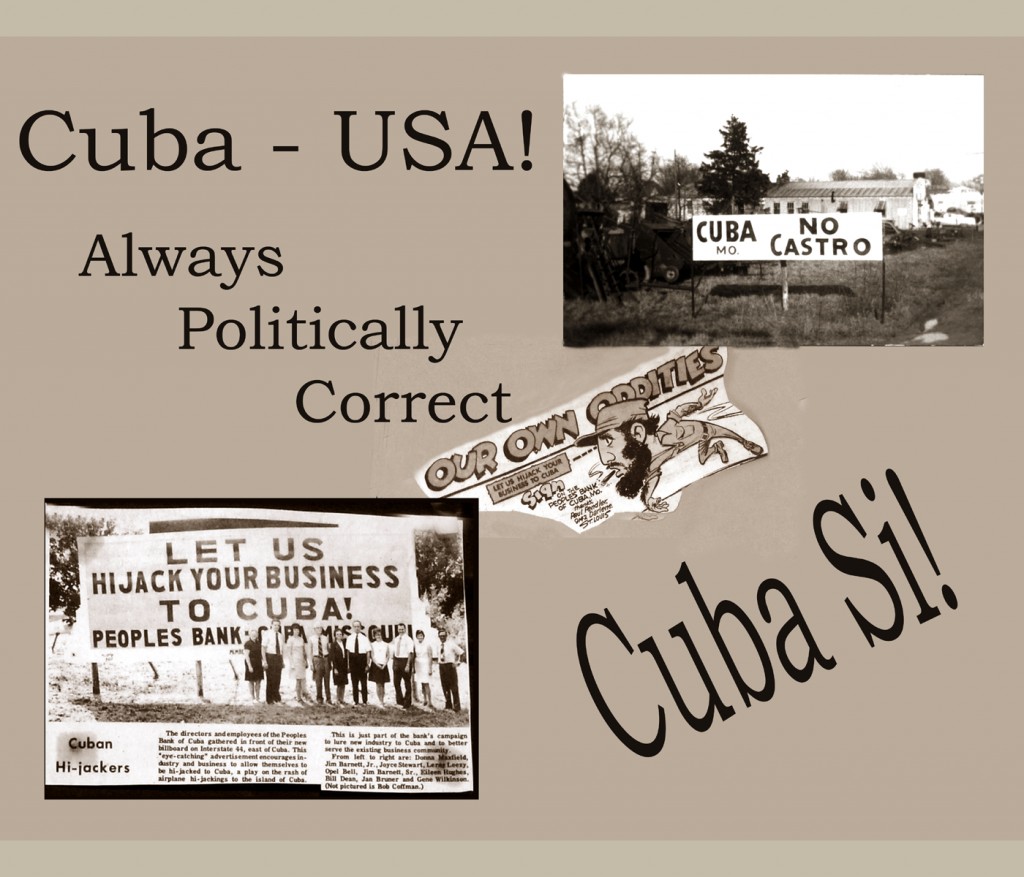
This historical compilation of photos shows a Cuba MO that played up its name's association with the island of Cuba. This page was part of Peoples Bank "Celebrating 110 Years of Service 1901-2001" calendar.
Missouri is known for having towns named for foreign cities or countries. Names such as Paris, Mexico, and, yes, Cuba are not unusual on Missouri maps. In fact, in 1857 Cuba was named after the island of Cuba, which was fighting for its independence and thought to be a beautiful island.
Before relations got chilly between the tropical Cuba and the US Cuba, the Cuba High School Class of 1952 actually traveled to the island of Cuba for their class trip. Twenty-two seniors and their chaperones left on the Burlington American Bus, No. 6660 on a trip to Havana. Only in Crawford County would a trip to Havana, Cuba begin by traveling to Steelville and then to Fredericktown, MO. The saga was chronicled in a Spring 1979 Backroads article by Cindy Cason and Linda Bach. Backroads was a Cuba HIgh School publication about the history, people, and activities of Crawford County.
Even in 1984, when Viva Cuba, our beautification organization was formed, the founders played off the idea of the Cuba connection in the name for the new organization. But between 1857 and today, changes occurred in relations with the island of Cuba.
In the 1960s and 70s, the Cuban Missile Crisis occurred, and planes were highjacked to Cuba. Americans’ viewpoint of the country changed. The US severed diplomatic relations with Cuba, and there is an embargo on doing business with the country.
In 1960, a local man Walter Dorf painted the “Cuba, MO—No Castro” sign and placed it at the west entrance to Cuba on old Rt. 66. There was no I-44 in those days. The sign was then pictured in the St. Louis paper. Next, it went around the world in the military Stars and Stripes. According to Walter Dorf’s daughter Joyce Stewart, “My brother-in-law saw it when he was stationed in Africa.”
Stewart said, “My father had a great sense of humor and loved the attention that the sign got. He was a sign painter that did almost all of the sign work in Cuba, and he painted this sign to please himself and no one else.”
Stewart was also associated with another sign associated with the two Cubas. Peoples Bank posted a billboard east of Cuba on I-44 that garnered a lot of publicity. It was part of the bank’s campaign to lure new businesses to Cuba and better serve the community. The “Let Us Hijack Your Business to Cuba” billboard was featured in the Our Own Oddities section of the St. Louis Post-Dispatch. Joyce Stewart is one of Peoples Bank employees standing in front of the billboard.
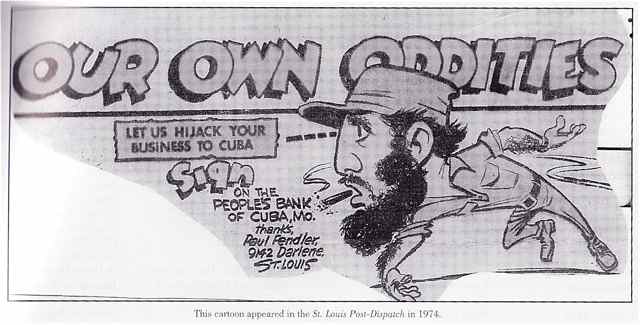
This Cuba History book says that this cartoon about the Cuba billboard made the St. Louis Post Dispatch in 1974,
Occasionally, when I am talking to tourists who are visiting the murals, they will say something like “You ought to play up your name connection with Cuba–but that there is no Castro.” I tell them “Been there, done that.” Although “political correctness” probably would veto the billboards today, they are a fun part of Cuba’s history.
A local entrepreneur remembers the “No Castro” sign and has commemorated its message in a t-shirt. Dan Sanazaro, owner of The Outpost General Store and the Guinness World’s Largest Rocking Chair, knows a good publicity angle when he sees it. One of his new t-shirt designs says “Cuba–(No Castro).”
It would be great if some of the Class of 1952 would log in and tell us some memories of their senior trip. However, they should remember “Some things that happened in Havana, should stay in Havana.”

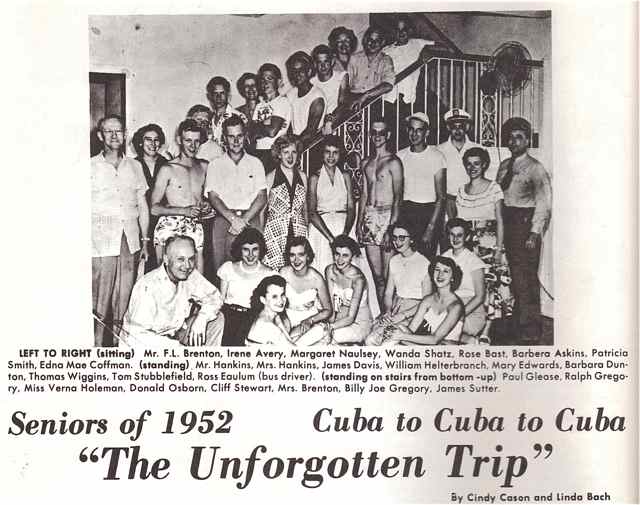
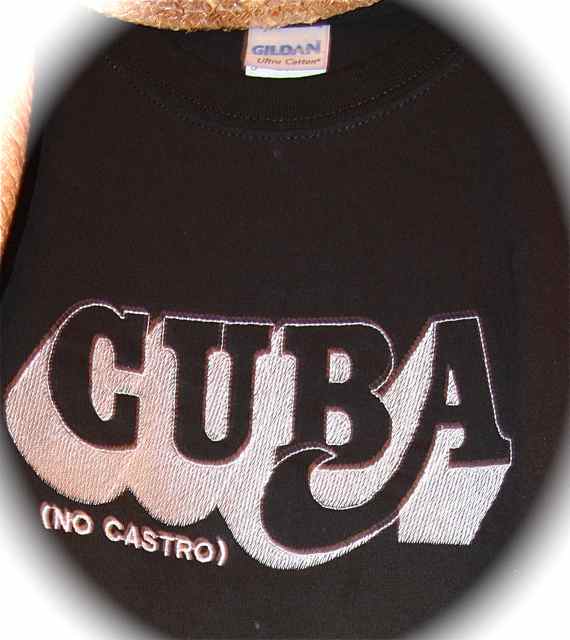
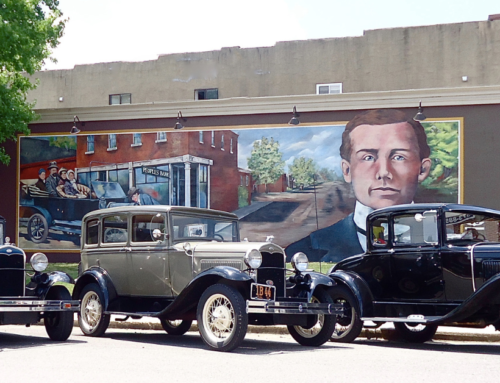



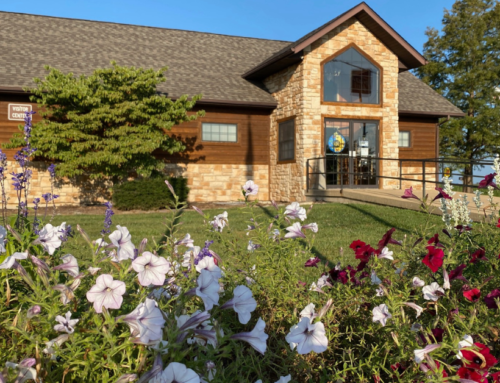

That is a wonderful article. Really makes me homesick. That is my class. Guess who is missing.? That’s o.k. I gave birth to a wonderful bundle of joy that day 57yrs ago.
Thanks for writing in. You can show the post to that “bundle” and let him or her know that you missed that trip of a lifetime for the delivery. Maybe someday travel will resume between the countries and you and your child can make the trip together.
Love it! Thanks Mrs. Reed. I still remember when Cindy and I wrote this for Backroads, still have the Backroads magazine and I am bringing it to the reunion tomorrow! WOW
The Backroads articles that students wrote have been a valuable part of preserving the history of Cuba.
[…] en Missouri. Publicado enEE UU-Cuba, 0 respuestas […]
[…] A Cuba with no Castro By Alberto de la Cruz, on July 21, 2012, at 4:30 pm In Missouri… […]
I love reading anything about Cuba. My grandfather was a pharmacist there in 20’s and 30’s. My father worked at the first Movie House there as a young man. My cousin Gene Pasoto and his wife Margie ran a restaurant there is the 70’s. I truly love the stories my Dad told me of his youth on the Merrimack river.